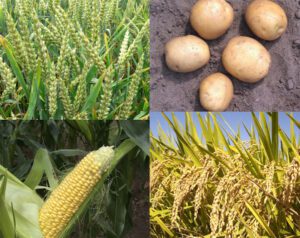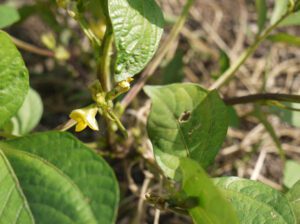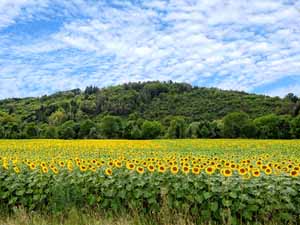Commercial ginger farming is a very common business in many countries around the world. It is a common kitchen ingredient and very popular in some areas and used for both cooking and also as traditional medicine.
Ginger is actually a flowering plant whose rhizome (ginger root or ginger) which is widely used throughout the world as a spice and also as a folk medicine. It is a nerbaceous perennial which grows annual pseudostems about one meter tall bearing narrow leaf blades.
The inflorescences bear flowers having pale yellow petals with purple edges, and arise directly from the rhizome on separate shoots.
Ginger is marketed in different forms such as raw ginger, dry ginger, bleached dry ginger, ginger powder, ginger oil, ginger ale, ginger oleoresin, ginger candy, grinded ginger, ginger beer, ginger wine, ginger flakes, ginger squash etc.
Ginger is very popular in traditional medicine and as a spice. World production of ginger was 4.1 million tonnes in the year of 2019, led by India with 44% of the world total. Nigeria, China and Nepal also had substantial production.
However, commercial ginger farming is a very easy, common and profitable business. Commercial ginger farming has some advantages, and both demand and value of ginger and it’s products are good. You can start this business for making money.
How to Start Ginger Farming Business?
Starting commercial ginger farming business is just like starting other commercial crop farming business. Starting this business is very easy and simple, and the plants generally grow well in relatively less caring and other management.

You can start this business even if you are a beginner (just learn the basics from an expert). Here we are trying to describe more about the steps of starting and operating a successful ginger farming business from planting, caring to harvesting and marketing.
Step 1. Site Selection
Ginger plants grow well in well drained loamy soils, and also in sandy or clay loam or red loamy soils. Ginger plants can’t tolerate water stagnation (water logged conditions).
Ideal pH range of 6-6.5 is required for good growth of crop. Avoid soil on which previously ginger was taken. And do not cultivate ginger crop on same site year after year.
Step 2. Land Preparation
Land preparation is the most important part of profitable ginger farming business, so prepare the land perfectly. Prepare the field by ploughing the land 2-3 times.
Do planking operation after ploughing. For ginger planting, beds of 15 cm height, 1 meter width and of convenient length are prepared. Keep distance of 50 cm between beds.
Step 3. Climate Requirement
Ginger plants grow well in a warm and humid climate. It is mainly cultivated in the tropics from sea level to an altitude of above 1500 MSL and it can be growth both under irrigated and rainfed conditions.
For successful ginger cultivation, the plants require a moderate rainfall at the sowing time till the rhizomes sprout, fairly heavy and well-distributed showers during the growing period and dry weather for about a month before harvesting.
Step 4. Varieties
There are numerous ginger varieties available throughout the world. And you have to choose the right variety for maximum production. You should consult with your local farmers for selecting the right variety for your production.
Step 5. Purchase Seed Rhizomes
The ginger plants are not grown form seeds. Rather, they are grown from seed rhizomes. So, purchase good quality seed rhizomes from any of the good suppliers in your area. You can also consider ordering online.
Step 6. Planting
You can use good quality, healthy, pests & diseases free rhizomes for planting. You can collect the rhizomes from organically cultivated farms near you.
However, to begin with, seed rhizomes from high yielding local varieties may be used in the absence of organically produced seed materials. And the seed rhizomes should not be treated with any chemicals.
Step 7. Caring
The ginger plants are generally very strong and hardy and they generally require less caring and other management. Although, taking additional caring will help the plants to grow well and produce more. Here we are trying to describe more about the caring process of ginger plants.
Fertilizing
Apply well decomposed cow dung at the rate of 15 tons per acre in soil at time of field preparation. Apply N:P:K at the rate of 25:10:10 kg/acre in form of Urea at the rate of 55 kg/acre, SSP at the rate of 60 kg/acre and MOP at the rate of 16 kg/acre.
Full dose of Potash and Phosphorus are applied at time of rhizome planting. Nitrogen dose is given in two equal splits. First half dose of N is given 75 days after planting and remaining half dose is given three month after planting.
Watering/Irrigation
Adequate irrigation or watering is a must for better growth of the plants and also for good production. Ginger is mostly grown as a rainfed crop, so provide irrigation depending upon rainfall intensity and rainfall frequency.
Mulching
In case of commercial ginger production, the crop is mulched with green leaves at the rate of 5 tons per acre. And repeat mulching at the rate of 2 tons per acre after every fertilizer application.
Weed Control
Controlling weeds is very important, because weeds consume nutrients from the soil and the crop suffer. Spray Atrazine at the rate of 4-5 grams per liter on moist soil, third day after plantation.
To kill weeds that grow after first spray of weedkiller, 12-15 days after plantation take spray of Glyphosate at the rate of 4-5 ml/Ltr water. After weedicide application, cover field with green manure or paddy straw.
Earthing up operation is carried to enhanced root development. 50-60 days after planting take first earthing operation and next after 40 days.
Step 8. Control Pests and Diseases
Like many other commercial crops, the ginger plants are also susceptible to some common pests and diseases. Common pests and diseases of the ginger plants are listed below.
Anthracnose
If you notice infestation of Anthracnose, spray Hexaconazole at the rate of 10 ml or Mancozeb 75WP at the rate of 25 gram per 10 liter of water.
Bacterial Wilt
For preventing bacterial wilt, drench plants with Copper oxychloride at the rate of 3 grams per litter of water immediately after disease is seen in field.
Blight and Leaf Spots
If you notice infestation of blight and leaf spot, take spray of Mancozeb at the rate of 30 grams or Carbendazim at the rate of 10 grams in 10 liter water by interval of 15-20 alternatively. Or you can also spray with Propiconazole at the rate of 1 ml per 1 liter of water.
Leaf Blotch
If you notice the infestation of this disease, take spray of Mancozeb at the rate of 20 grams or Copper Oxycloride at the rate of 25 grams per 10 litter of water.
Root or Rhizome Rot
For controlling root or rhizome rot disease, drench the crop with Mancozeb at the rate of 3 grams per liter or Metalaxyl at the rate of 1.25 grams per litter at 30, 60 and 90 days after planting.
Rhizome Fly
If you observe the infestation of rhizome fly in the field, spray Acephate 75SP at the rate of 15 grams in 10 liters of water. Repeat the spray with 15 days of interval.
Shoot Borer
If you notice the infestation of shoot borer, spray with Dimethoate at the rate of 2 ml per liter or Auinalphos at the rate of 2.5 ml per liter of water.
Sucking Pest
For controlling sucking pest, take spray of neem based pesticide like Azadirachtin 0.3EC at the rate of 2 ml per liter of water.
Step 9. Harvesting
Generally the ginger crop become ready for harvesting within 8 months. Ginger is harvested from the 6th months for fresh spice purpose. But if you want to use the ginger for processing, then it is harvested after 8 months.
When the leaves of ginger plants gets yellow and dry out completely, then it is the right time for harvesting. Remove rhizomes by digging and after harvesting clean rhizomes by thoroughly washing in water for 2 to 3 times. Then dry them in shades for 2-3 days.
Yield
It’s very tough to tell the exact number, because it depends on numerous factors. The average production of fresh ginger is estimated at about 6 to 10 tonnes per acre.
Step 10. Marketing
This is the most important part of any crop farming business. Your venture will not be profitable if you can’t sell in right price. So, determine your marketing strategies first before starting this business. You can consult with your local farmers for more information.
These are the common steps and ways for starting and operating a successful ginger farming business. Hope this guide has helped you! Good luck and may God bless you!





